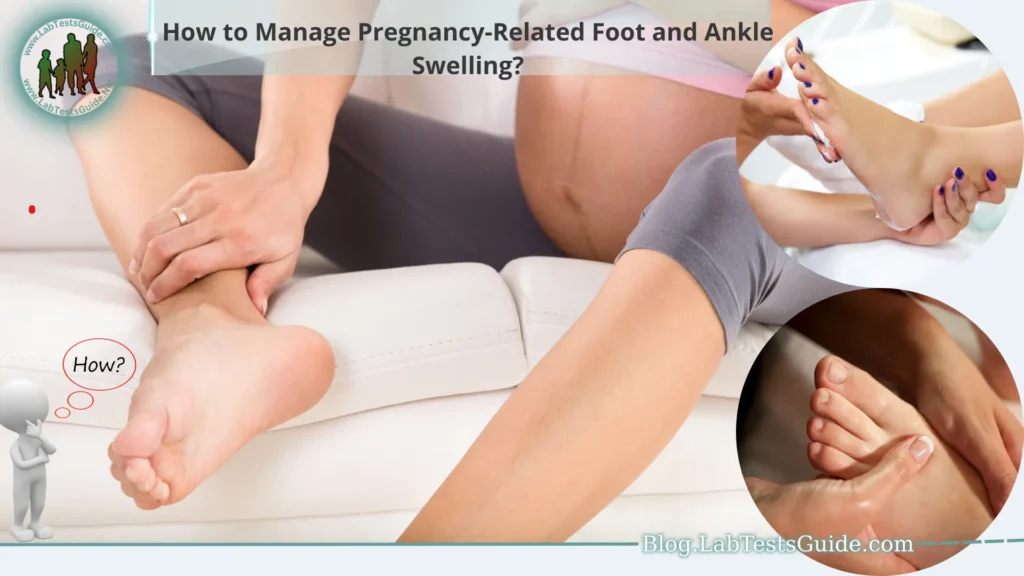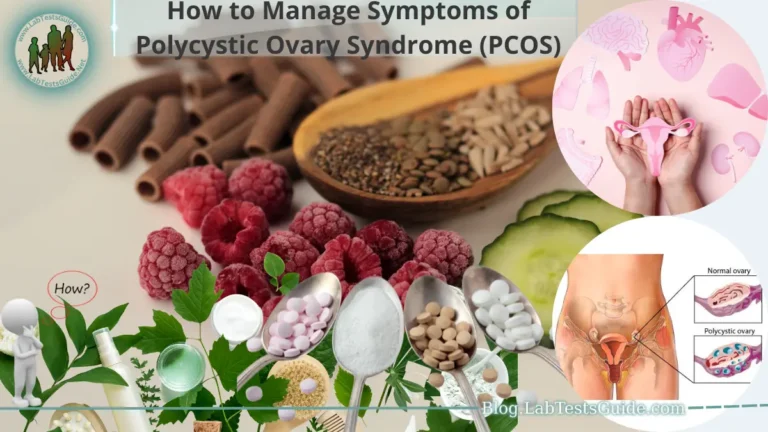Pregnancy is a beautiful and transformative experience for many women, but it also brings various physical changes and challenges. One common issue that pregnant women may encounter is foot and ankle swelling, medically known as edema. While some level of swelling is normal during pregnancy due to hormonal changes and increased blood and fluid volume, excessive or persistent swelling can cause discomfort and potential health concerns.

Managing pregnancy-related foot and ankle swelling is essential to promote overall well-being and ensure a healthy pregnancy journey. This guide aims to provide valuable information and practical tips for pregnant individuals to understand, prevent, and alleviate foot and ankle swelling during this remarkable phase of life.
Understanding Pregnancy-Related Foot and Ankle Swelling:
Physiology of pregnancy-related swelling:
- Hormonal changes: During pregnancy, hormonal fluctuations, particularly increased levels of progesterone, can lead to fluid retention and swelling in various parts of the body, including the feet and ankles.
- Increased blood and fluid volume: The body produces more blood and fluid during pregnancy to support the growing fetus. This extra fluid can accumulate in the lower extremities, causing swelling.
- Pressure on blood vessels: As the uterus expands, it can put pressure on the veins that return blood from the legs and feet to the heart, impeding proper circulation and leading to swelling.
Differentiating normal swelling from concerning symptoms:
- Normal swelling:
- Mild to moderate swelling in the feet and ankles, particularly at the end of the day.
- No associated pain or discomfort.
- Resolves with rest, elevation, and other self-care measures.
- Concerning symptoms:
- Sudden or severe swelling, especially if it occurs only in one leg.
- Swelling accompanied by pain, redness, or warmth in the affected area.
- Rapid weight gain or swelling in the face, hands, or around the eyes.
- Headaches, vision changes, or high blood pressure.
- These symptoms could indicate a more serious condition, such as preeclampsia or deep vein thrombosis, and should be evaluated by a healthcare professional.
Understanding the underlying physiological changes and being able to differentiate between normal swelling and concerning symptoms is crucial for managing pregnancy-related foot and ankle swelling effectively. By recognizing the factors contributing to swelling and staying vigilant for any potential warning signs, pregnant individuals can take appropriate steps to maintain their well-being and seek medical attention when necessary.
Tips for Managing Pregnancy-Related Foot and Ankle Swelling:
Foot and ankle exercises and stretches:
- Ankle circles: Sit or lie down and gently rotate your ankles in circular motions, both clockwise and counterclockwise, to improve blood circulation and reduce swelling.
- Toe stretches: Sit with your legs extended and use your hands to gently stretch your toes upward and then downward, holding each position for a few seconds. This can help relieve tension and improve flexibility.
- Calf stretches: Stand facing a wall, place your hands on the wall for support, and step one foot back while keeping it straight. Bend your front knee and lean forward to stretch your calf muscles. Hold for 30 seconds on each leg.
Lifestyle modifications:
- Proper hydration: Drink an adequate amount of water throughout the day to help flush out excess fluids and reduce swelling.
- Balanced diet: Consume a well-balanced diet rich in fruits, vegetables, and whole grains to support overall health and minimize fluid retention.
- Regular physical activity: Engage in low-impact exercises approved by your healthcare provider, such as walking or swimming, to promote blood circulation and reduce swelling.
Footwear considerations:
- Choosing comfortable shoes: Opt for supportive footwear with a wide toe box and low heels. Avoid tight or constricting shoes that can impede circulation.
- Using support devices: Consider using arch supports, orthotic inserts, or compression socks recommended by a healthcare professional to provide additional support and reduce swelling.
Elevation and rest:
- Elevate your legs: Lie down and elevate your legs above the level of your heart for 15-20 minutes several times a day to encourage fluid drainage and reduce swelling.
- Take breaks and rest: Avoid prolonged periods of standing or sitting. Take frequent breaks to elevate your feet and rest whenever possible.
Compression therapy:
- Wear compression socks or stockings: These garments apply gentle pressure to the legs, helping to prevent fluid buildup and reduce swelling. Consult with a healthcare professional to determine the appropriate compression level and fit.
Massage and self-care techniques:
- Gentle foot and ankle massage: Use your hands or a massage tool to apply gentle, upward strokes on your feet and ankles to stimulate circulation and alleviate swelling. Avoid excessive pressure or deep tissue massage.
- Soak your feet: Soaking your feet in cool water with Epsom salt can provide temporary relief from swelling and soothe tired muscles. Consult with your healthcare provider for appropriate soaking recommendations.
Monitoring and seeking medical advice:
- Keep track of your swelling patterns: Monitor the severity and duration of swelling episodes. If you notice a sudden increase or concerning changes, consult with your healthcare provider.
- Seek medical advice: If you experience any concerning symptoms such as severe or localized swelling, pain, or other unusual symptoms, reach out to your healthcare provider for evaluation and guidance.
By incorporating these tips into your daily routine, you can effectively manage and reduce pregnancy-related foot and ankle swelling. Remember to consult with your healthcare provider for personalized advice and to ensure that these strategies are appropriate for your specific situation.
When to Seek Medical Attention:
Signs of more serious conditions:
- Sudden or severe swelling: If you experience a sudden and significant increase in swelling in your feet and ankles, especially if it occurs only in one leg, it could be a sign of a more serious condition such as deep vein thrombosis (DVT).
- Pain, redness, or warmth: If you notice pain, redness, or warmth in the swollen area, it could indicate an infection or inflammation that requires medical attention.
- Headaches and vision changes: Severe headaches, changes in vision, or other visual disturbances can be symptoms of preeclampsia, a potentially dangerous condition characterized by high blood pressure during pregnancy.
- Rapid weight gain and swelling in other areas: If you experience rapid weight gain or swelling in the face, hands, or around the eyes, it may indicate a more serious condition that needs medical evaluation, such as preeclampsia.
When to consult a healthcare professional:
- If you are uncertain about the severity of your swelling or any associated symptoms, it is always best to consult with your healthcare provider.
- If your swelling is causing severe discomfort or interfering with your daily activities and quality of life, seek medical advice for appropriate management strategies.
- If you have a history of medical conditions such as diabetes, hypertension, or kidney disease, it is important to communicate with your healthcare provider to monitor and manage your foot and ankle swelling effectively.
It is crucial to remember that every pregnancy is unique, and the severity of foot and ankle swelling can vary. While mild to moderate swelling is common during pregnancy, sudden or severe swelling, along with other concerning symptoms, should not be ignored. Prompt medical attention can help identify any underlying issues and ensure the well-being of both the pregnant individual and the baby.
Other Considerations for Foot and Ankle Health During Pregnancy:
Managing foot pain and discomfort:
Proper footwear: Choose shoes with good arch support, cushioning, and a wide toe box to alleviate foot pain and provide adequate support.
Ice packs: Apply ice packs or cold compresses to swollen or painful areas for 15-20 minutes to reduce inflammation and numb the area.
Gentle foot massages: Use gentle massage techniques or seek professional foot massages to relieve foot discomfort and promote relaxation.
Pain relief techniques: Consult with your healthcare provider about safe pain relief options, such as topical creams or over-the-counter pain relievers suitable for use during pregnancy.
Preventing other foot conditions:
- Plantar fasciitis: Maintain a healthy weight, wear supportive footwear, and perform foot stretches and exercises to prevent or alleviate plantar fasciitis, a common condition causing heel pain.
- Flat feet: If you have flat feet or overpronation, consult with a healthcare professional about using orthotic inserts or arch supports to provide stability and reduce discomfort.
- Ingrown toenails: Trim your toenails straight across and avoid cutting them too short to prevent ingrown toenails. If you experience any signs of infection or inflammation, seek medical attention promptly.
Taking care of your foot and ankle health during pregnancy goes beyond managing swelling. By addressing common foot-related issues and adopting preventive measures, you can minimize discomfort, maintain mobility, and promote overall well-being throughout your pregnancy journey. Remember to consult with your healthcare provider for personalized advice and recommendations specific to your needs.
Conclusion:
Pregnancy-related foot and ankle swelling is a common occurrence during pregnancy, but it can be managed effectively with the right strategies and precautions. By understanding the physiology behind swelling, differentiating normal swelling from concerning symptoms, and implementing practical tips, pregnant individuals can find relief and maintain their overall well-being.
Foot and ankle exercises, lifestyle modifications, proper footwear choices, elevation, compression therapy, self-care techniques, and regular monitoring play vital roles in managing pregnancy-related swelling. Additionally, being aware of when to seek medical attention for more serious symptoms or concerns is essential for ensuring the health and safety of both the pregnant individual and the baby.






